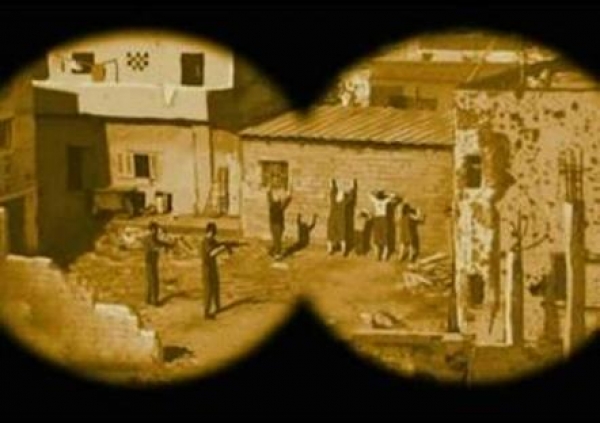September - 31 years after the Sabra and Shatila Massacre : Where Does The Truth Lie?
Assassination
23 days after his election for the presidency of the republic, Bachir Gemayel was assassinated on the evening of Tuesday, 14th of September 1982, in a bomb blast that targeted the headquarters of the Phalanges Party in Ashrafieh and claimed the lives of 21 fellow Phalangists and supporters. Investigation revealed that the attack was executed by a member of the Syrian Social Nationalist Party called Habib Al-Shartouni upon the request of Nabil Al-Alam, a senior official in the party. However, the findings failed to determine the side that Al-Alam was working for: Syria, the Fatah security official Abou Iyad, or a third party that had a vested interest in the assassination?
Massacre
Under the pretense of avenging Gemayel’s assassination, and even before the investigation blamed anyone, the Lebanese Forces militant groups started flocking to West Beirut and to the hinges of the Palestinian camps to provoke the citizens under the watch of the Israelis. On Thursday, 16th of September 1982, shortly before sunset, militants began entering the two neighboring camps of Sabra and Shatila supported by the South Lebanon Army lead by Saad Haddad. The Israelis lent them a hand by tightening the blockade over the camps and prohibiting residents from fleeing. Having deported the armed Palestinian youths from Lebanon a few weeks earlier, the camps were mostly crammed with children, women and elderly men. Those were slain mercilessly in a round of heinous killings that lasted for 48 hours from Thursday until Saturday morning. The massacre targeted the Palestinians and Lebanese alike.
Several stories circulated about the atrocities committed against civilians and new forms of criminality and violence, never seen or heard of before, were reported during the massacre. The slaughter unveiled an inherent hatred that transformed the criminals into cold-blooded killing machines devoid of humanity and intent on the annihilation of the refugee camps. Pregnant women and children were not spared lest they grow up and pose a threat to the “pure Lebanese element”.
The heinousness of this massacre might require volumes to be recorded fairly, but its major headline was the loss of innocent lives in an utter act of brutality.
Victims
There was no accurate victim count. Some were killed and buried immediately without knowing their numbers and others were abducted and are still missing to date, which lead to contradictory knowledge about the numbers of fatalities with some estimating them between 700 and 800 people and others claiming there were around 1300 to 3000 victims. There were even higher estimates that placed the death toll at 4000 including both Lebanese and Palestinians.
Responsibility
Who was behind the massacre? The ambiguity shrouding the Sabra and Shatila Massacre has not been unveiled entirely to allow for a precise determination of responsibilities or to disclose the sides involved in ordering and executing this mass murder. Surrendering to a series of internal and external pressures and protests, Israel appointed, two months after the slaughter, the Kahan Commission, chaired by the head of the Supreme Court, Isaac Kahan, to investigate the incident. The Kahan report did not contain a judicial verdict and kept a classified section that remains unknown to the public even today after more than 3 decades. Israel believed that the publishing of the entire report might work against its interest and take its toll on its state security and foreign affairs.
However, the disclosed evidence held Israel accountable indirectly for the massacre which yielded the death of hundreds of Palestinians under the hands of pro-Israeli Lebanese militias, while the then Minister of Defense Ariel Sharon bore personal responsibility for not taking serious steps to prevent or stop the massacre, which forced him to resign. The then Prime Minister Menachem Begin and Chief of staff Rafael Eitan were apportioned part of the blame and fingers were pointed at the Lebanese Forces lead by Elie Hobeika who became a supporter of Syria and was elected to Parliament,. He was then appointed minister and denied the findings of the report asserting his possession of documents that would acquit him and the Christians of guilt. Unfortunately, Hobeika was assassinated in early 2002 and could not spill the beans before the Belgian judiciary. It is rumored that he had evidence that could have convicted the Israelis of the slaughter and killing him was to ensure that such evidence remains undisclosed. As for Samir Geagea, he denied responsibility for the violence and reported in the media that he was leading the north front when the massacre occurred.
A flicker of hope was given for the rights of victims when Belgium approved the Universal Jurisdiction Law, which allows the prosecution of war criminals regardless of where the alleged crime was committed. A number of attorneys filed lawsuits against Ariel Sharon, but their legal action did not avail or attain its intended purpose due to the amendment of the Universal Jurisdiction Law in 2003.
Objectives
The massacre aimed at fulfilling multiple objectives, the most important of which were according to political analysts:
- Intimidating the Palestinians and their Lebanese allies and driving them out of Lebanon.
- Fueling sectarian conflicts among the Lebanese and igniting internal wars and divides.








Leave A Comment